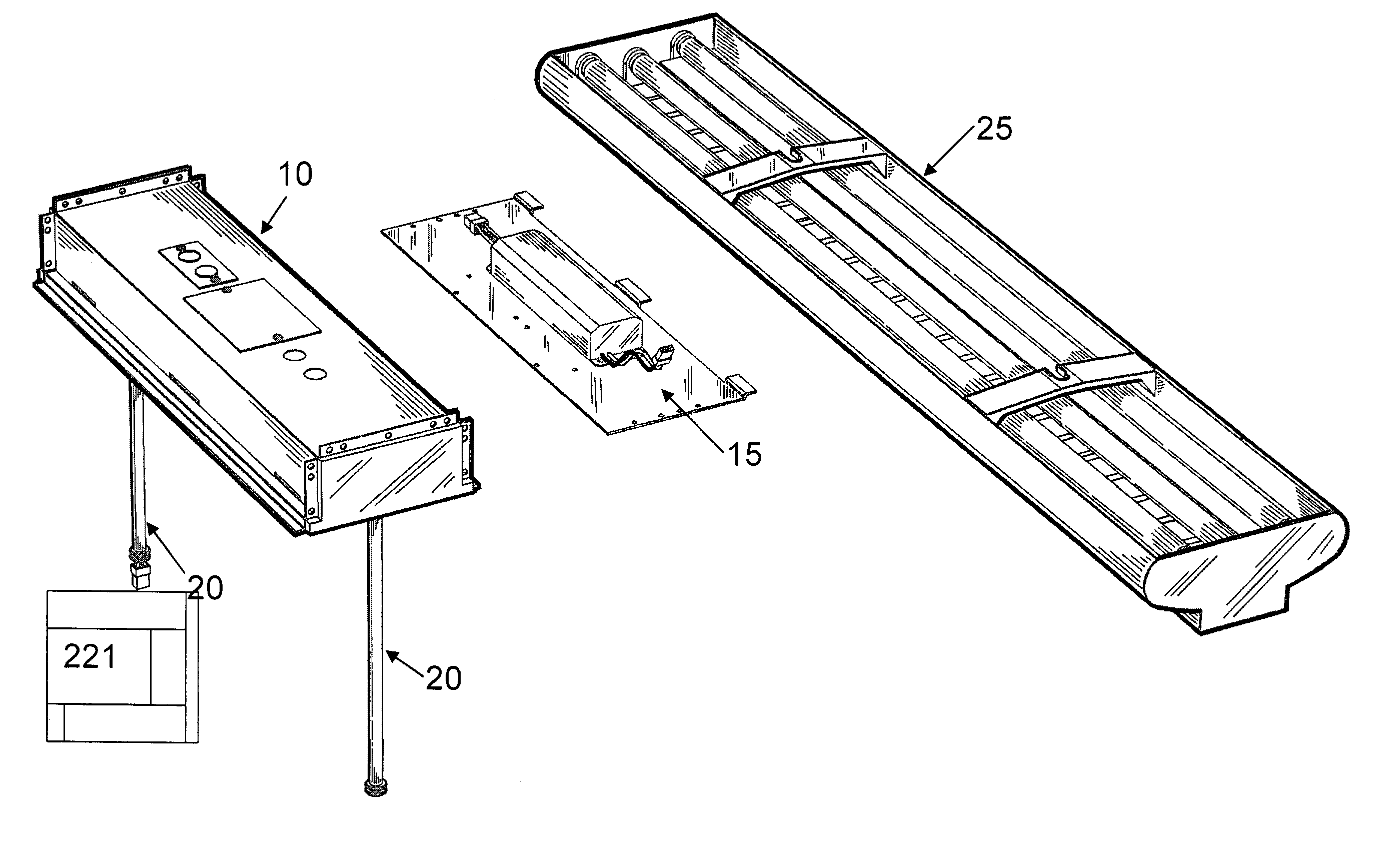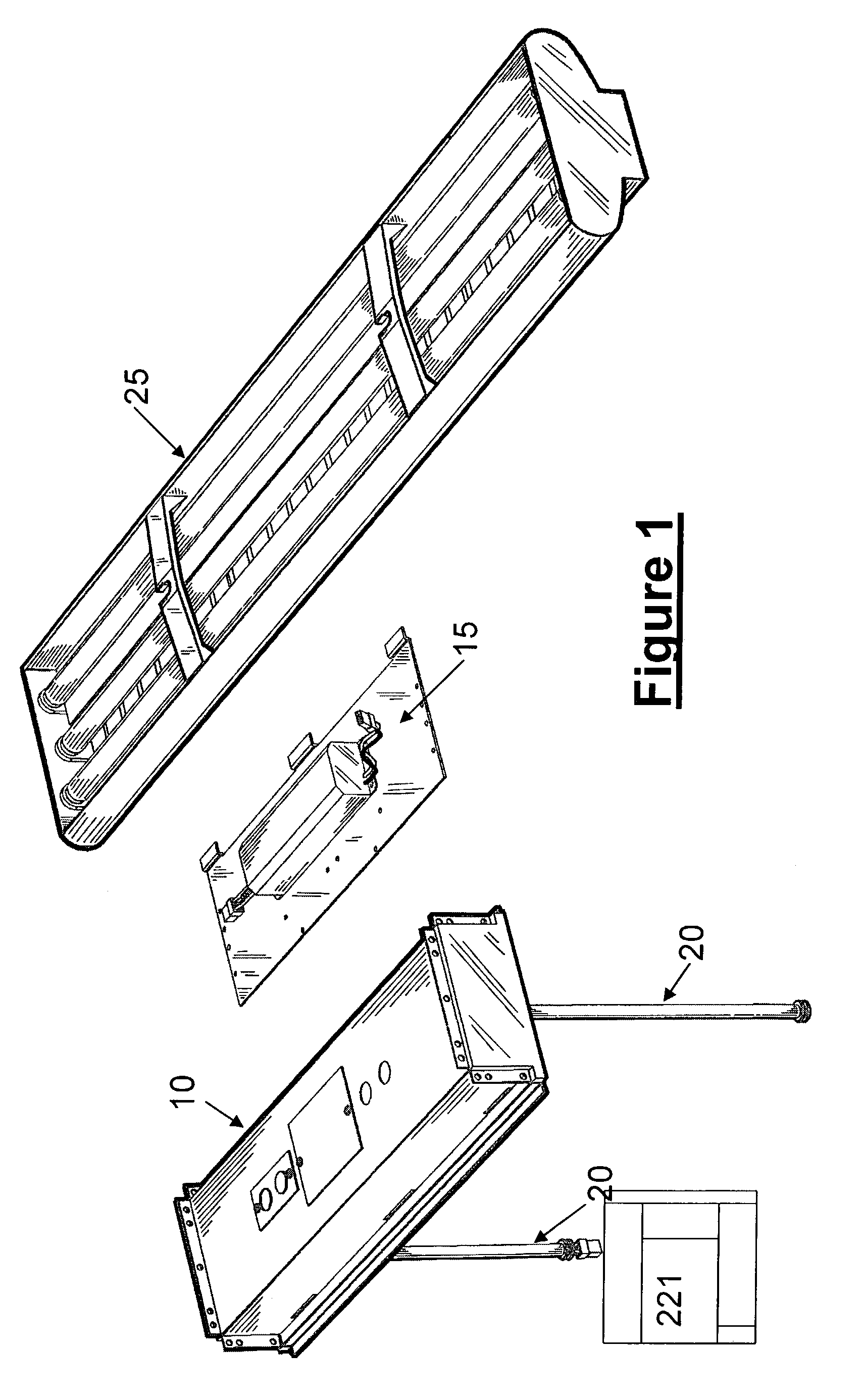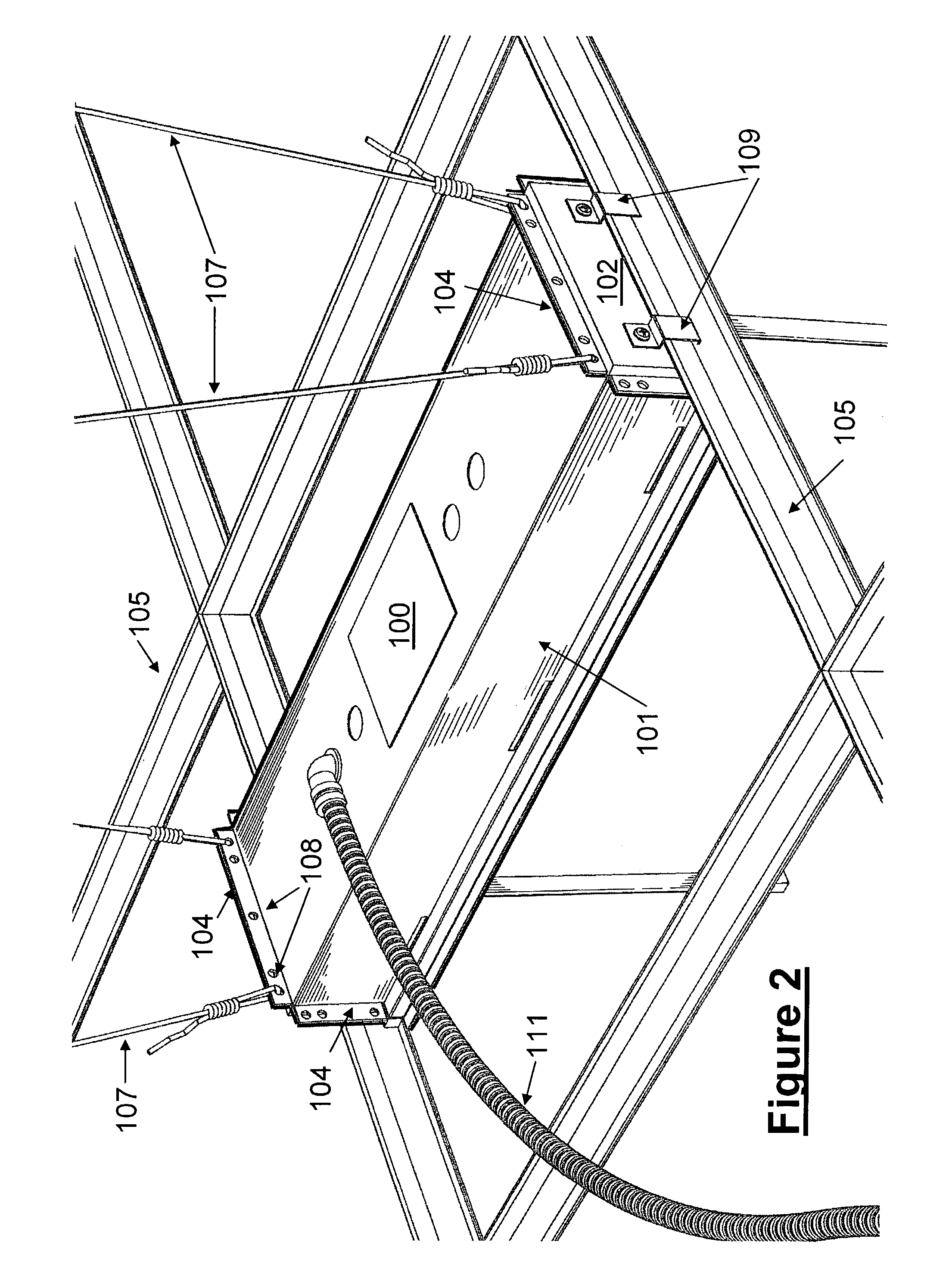Modular ambient lighting system
a module-based, ambient lighting technology, applied in the direction of light source combinations, coupling device connections, built-in power, etc., can solve the problems of cave-like feeling, glare on the screen of employees working with computer systems, and insatiable lighting provided in business environments utilizing computer systems, etc., to achieve the effect of supporting flexibility for users
- Summary
- Abstract
- Description
- Claims
- Application Information
AI Technical Summary
Benefits of technology
Problems solved by technology
Method used
Image
Examples
Embodiment Construction
[0034]Referring to FIG. 1, the components of the invention include three basic modules. A support module 10 is the core structural component of the invention. Electrical connections to building power and the physical support infrastructure for the lighting system are all contained in this module. An interchangeable power module 15 fits into a matching recess or “foot print” in the bottom of the support module 10. The electrical components and circuitry for the light system are located on the power module 15. Pluralities of interchangeable power modules 15 are available in the invention that fit into the recess of the support module 10. Under certain circumstances, up to four power modules 15 may be mounted into corresponding recesses of a given support module 10.
[0035]Supports 20 connect to the support module 10 to hang down from the support module 10 and suspend a light fixture body module 25. The ends of the supports 20 fit into a bracket in the support module 10 and a bracket in ...
PUM
 Login to View More
Login to View More Abstract
Description
Claims
Application Information
 Login to View More
Login to View More - R&D
- Intellectual Property
- Life Sciences
- Materials
- Tech Scout
- Unparalleled Data Quality
- Higher Quality Content
- 60% Fewer Hallucinations
Browse by: Latest US Patents, China's latest patents, Technical Efficacy Thesaurus, Application Domain, Technology Topic, Popular Technical Reports.
© 2025 PatSnap. All rights reserved.Legal|Privacy policy|Modern Slavery Act Transparency Statement|Sitemap|About US| Contact US: help@patsnap.com



